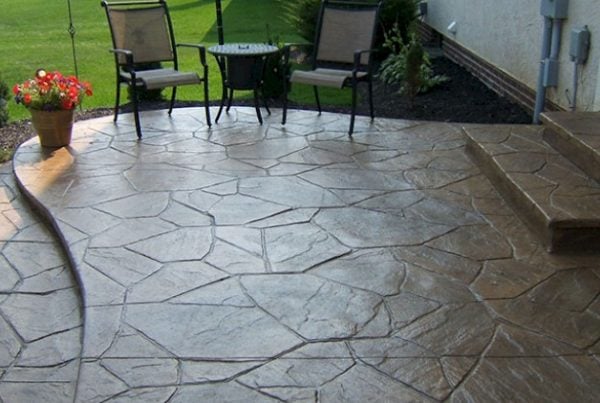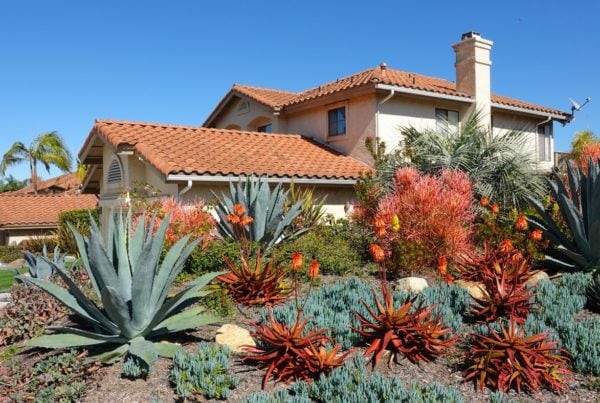Once only seen on professional sports fields, artificial turf has become a realistic option for modern homeowners. If you’re thinking of adding it to your exterior landscape, here are the steps you should take.
Should You Try It?
False turf can seem appealing to homeowners who want a green, lush lawn without all the time-consuming maintenance that comes with natural grass. Artificial grass requires no fertilizer or water, which makes it relatively eco-friendly. There’s also no mowing required.
A quality lawn made of artificial turf can last many years under heavy foot traffic. In many instances, the only maintenance required is some occasional spraying with a hose to clean off pet waste.
With that said, when homeowners try to install the turf themselves, they can run into major problems. Not only is the process labor-intensive; it is fraught with risk. It’s not uncommon for inexperienced do-it-yourselfers to accidentally puncture and damage their expensive turf. They also tend to have trouble laying it down evenly so it looks natural. Many times, they fail to properly add underlying barriers which prevent weeds from growing through the synthetic turf.
With all this in mind, it’s almost always better to have your artificial turf installed by a reputable, experienced landscaping company. If you’re dead set on trying it yourself, however, these are the steps you should take:
Step 1: Remove existing turf.
Using a spade, thoroughly extract the existing layer of sod or turf. You can also use a sod-cutting machine; these are available to rent at many neighborhood home improvement stores for about $100 per day. If a friend or neighbor can’t use the old turf, dispose of it according to the waste removal rules in your local community.
Step 2: Level the base.
Before laying your artificial turf, evenly spread approximately 1.5 inches of builder’s sand to create a nice level surface. Use a quality landscaping rake to evenly distribute the sand. Next, compact the sand using either a tamper or flat 2X2 piece of plywood and a plain rubber hammer.
Step 3: Apply landscaping cloth.
Unless you want unsightly weeds poking their way up through your false turf, you will need to apply a quality weed barrier. Roll it out to thoroughly cover the space, allowing the barrier’s edges to overlap at any joint meetings by several inches. Trim the barrier using a utility knife and secure it into place by applying landscaping staples about every three or four feet.
Step 4: Prepare the artificial turf.
False grass is designed with a “grain,” which means it will bend at a slight angle instead of standing up straight. For a more natural look, you need to unroll it so the blades bend toward your house and make sure every piece is laid out in the exact same direction. If you are using more than one roll’s width of artificial turf, stagger the end seams so they won’t line up in a row. This will make them less visible and promote even wear over time.
Once you have the turf unrolled, trim any edges from the backside using a utility knife, being careful not to damage any of the turf.
Step 5: Join pieces where necessary.
False turf usually comes in widths of 12 to 15 feet. If the area you’re covering exceeds the roll’s width, you will have to join segments together. If this is the case, trim the edge of each piece using a utility knife (cut from the backside, being careful not to damage the turf) so the two segments will meet without any overlap. Then roll the two segments back and place jointing tape beneath where the seam will be.
Apply a generous amount of artificial turf adhesive to the jointing tape, and lay down the two segments together, making sure the seam lines up without any overlap.
Step 6: Secure the turf.
Once everything is in place, nail the false grass down using a rubber hammer and 7-inch lawn spikes, spacing each one about four feet apart. Be careful to spread the turf blades out and away from the nail base before hammering it in. Afterward, you can brush the nap up around the nails to conceal them.
Step 7: Fluff the turf.
Once the artificial grass is installed, take some time to brush the whole lawn with a stiff-bristled broom to make the turf blades appear more natural. Hose any stray sand away to clean up the artificial lawn’s appearance.
These days, synthetic turf comes in a wide array of options for business, athletic and residential landscapes. To get optimal results, however, it’s best to have your turf installed by the experts at RMPS Landscaping.
At RMPS Landscaping in Castle Rock, we provide a complete spectrum of expert landscaping services, from water features and hardscaping to stonework, trees, outdoor lighting, terracing, sod and total landscape renovations. Contact our attentive team to learn how we can help turn your boldest vision into reality.






